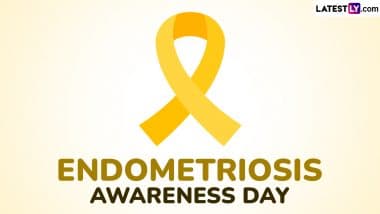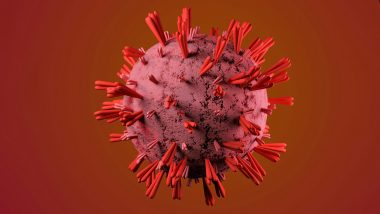Melbourne has experienced a notable outbreak of Legionnaires' disease, with several cases reported across the city. The health authorities have confirmed 22 cases since Friday, and six suspected cases have been identified. Most of the affected individuals are adults over 40 years. Many of them require hospitalisation and intensive care for severe community-acquired pneumonia. Health authorities are investigating the source of the infection, which is often linked to inhalation of contaminated water particles through air conditioners, cooling towers and other potential sources. But what is the disease all about? In this article, we’ll discuss everything about Legionnaires' disease, its symptoms, causes, precautions and treatment.
What Is Legionnaires’ Disease?
Legionnaires' disease is a type of pneumonia contracted by inhaling water droplets contaminated with the Legionella bacteria. This disease can lead to serious respiratory complications, particularly in vulnerable populations such as the elderly, smokers, and those with weakened immune systems. It is named after an outbreak in 1976 among people attending an American Legion convention in Philadelphia. The disease primarily spreads through inhalation of aerosolised water droplets containing the Legionella bacteria.
Legionnaires' Disease Causes
The primary cause of Legionnaires' disease is the Legionella pneumophila bacterium, commonly found in freshwater environments like lakes and streams. However, the bacteria can become a health concern when they grow and spread in man-made water systems such as hot tubs, cooling towers, hot water tanks, and large plumbing systems. The disease does not spread from person to person, rather, it is spread through the inhalation of contaminated aerosols.
Legionnaires' Disease Symptoms
Legionnaires' disease shares many symptoms with other types of pneumonia, making it challenging to diagnose based on symptoms alone. Here are some common symptoms:
Cough: Often persistent and may produce mucus or blood.
Fever: High fever, often exceeding 104°F (40°C).
Chills: Accompanied by a shaking feeling.
Muscle Aches: Painful muscles throughout the body.
Headache: Persistent and severe headaches.
Shortness of Breath: Difficulty in breathing due to lung infection.
Chest Pain: Discomfort or pain while breathing or coughing.
Gastrointestinal Symptoms: Nausea, vomiting, and diarrhea.
Legionnaires' Disease Complications
Legionnaires' disease can lead to several severe complications if not treated promptly:
Respiratory Failure: Severe pneumonia can prevent the lungs from getting enough oxygen into the blood.
Acute Kidney Failure: The kidneys may stop working properly, leading to a build-up of waste products in the body.
Encephalopathy: Neurologic issues, such as worsening confusion, balance difficulties, and speech problems, can develop.
Empyema: Empyema involves the accumulation of pus in the space around the lungs, potentially requiring treatment with a chest tube.
Heart Inflammation: Bacterial infections in the heart can lead to inflammation, which may be managed with medications.
Rhabdomyolysis: This condition occurs when muscle damage leads to the breakdown of muscle tissue. Treatment typically involves flushing toxins from the body.
Legionnaires' Disease Prevention
Preventing Legionnaires' disease involves controlling the growth and spread of Legionella bacteria in water systems. Key prevention strategies include:
Regular Maintenance: Ensuring that water systems in buildings, especially in healthcare facilities and hotels, are regularly cleaned and disinfected.
Water Temperature Control: Keeping water temperatures either below 68°F (20°C) or above 122°F (50°C) to prevent bacterial growth.
Proper Water Treatment: Using biocides and other water treatment methods to kill Legionella bacteria.
System Flushing: Regularly flushing unused or underused water systems to prevent stagnation.
Legionnaires' Disease Treatment
Early diagnosis and treatment are crucial for managing Legionnaires' disease effectively. The primary treatment involves antibiotics. Here are some key aspects of treatment:
Antibiotics: According to the National Library Of Medicine, the most commonly used antibiotics are fluoroquinolones and macrolides.
Hospitalisation: Severe cases often require hospitalisation for intensive care, oxygen therapy, and intravenous antibiotics.
Supportive Care: Includes pain relief, fever control, and treatment of any complications that arise.
With prompt and appropriate treatment, most patients with Legionnaires' disease recover fully, although some may experience lingering symptoms. Reach out to your doctors for further queries and treatment.
Legionnaires' disease is a serious health concern that requires vigilance and preventive measures to control and prevent outbreaks. The recent outbreak in Melbourne underscores the importance of regular maintenance and monitoring of water systems to prevent the spread of Legionella bacteria. Public awareness of the symptoms and timely medical treatment are crucial to managing this disease effectively.
(The above story first appeared on LatestLY on Jul 30, 2024 11:26 AM IST. For more news and updates on politics, world, sports, entertainment and lifestyle, log on to our website latestly.com).













 Quickly
Quickly





















